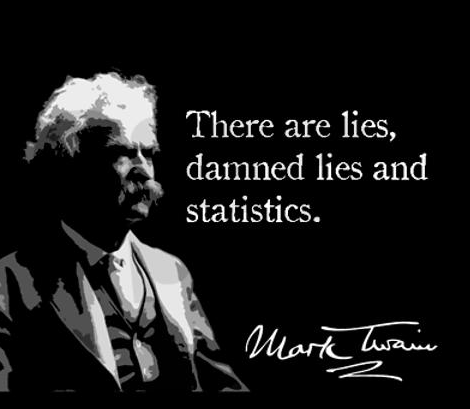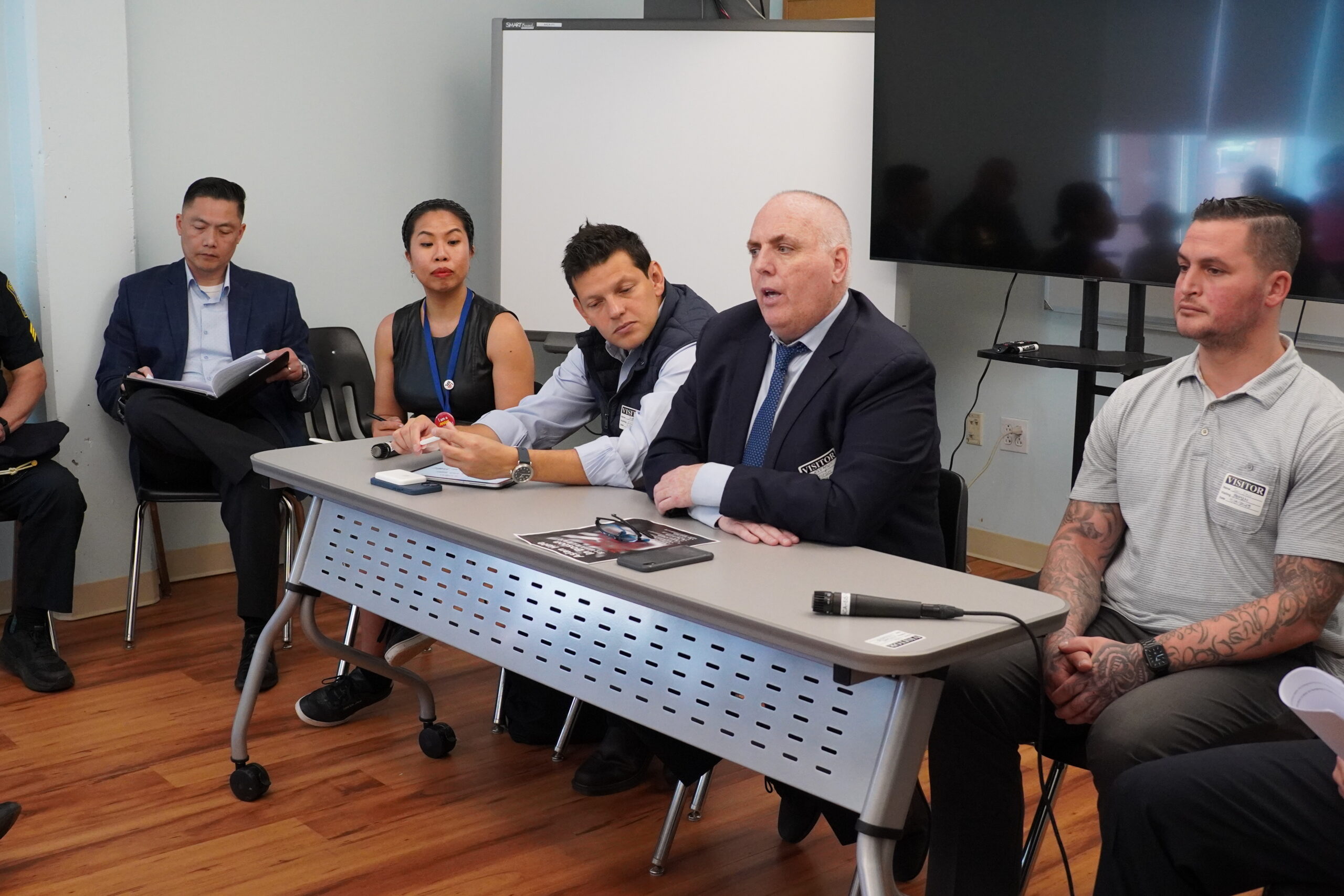In a collection of his autobiographical writings published in 1907, the American writer Mark Twain cited approvingly a little aperçu that there are three kinds of lies – lies, damned lies, and statistics. Would you cross a river that is four feet deep on average? Hopefully not, since it might be a foot deep in parts and seven feet deep in other parts: four feet deep on average, surely, but not necessarily safe to cross.
What if you are diagnosed with a certain form of cancer, and your doctor tells you it has a median survival time of eight months? Don’t start working on your will just yet. This statistic may sound frightening, but it can be delivered in another way: fifty percent of people with this cancer live longer than eight months. The evolutionary biologist Stephen Jay Gould, who was in fact diagnosed with a cancer (peritoneal mesothelioma) the median survival time of which was eight months, went on to live another twenty years. After his recovery, he published an essay called “The Median Isn’t the Message”, about how statistics in medicine can sometimes be misleading.
Collecting, organizing, and presenting data are never wholly objective pursuits. You might read a story about how “Asian Americans” on average have high incomes, well above the country’s median income. But grouping disparate identities together under the label of “Asian American” may disguise the fact that some members of the group are not doing as well: Burmese, Nepalese, Bangladeshi, and Laotian individuals in the United States typically make well below the median income. 75% of Taiwanese Americans have a bachelor’s degree, but the number is less than 20% for Hmong and Cambodian Americans. This fact is lost when you simply lump people together as “Asian American” – the Pew Research Center says that “more than half of Asians ages 25 and older (54%) have a bachelor’s degree or more education,” obscuring some deep disparities between different groups. It’s a bit like putting Bill Gates in a room with a hundred homeless people and declaring that the average net worth of the group is $1 billion. Talking about averages is not always as informative as you think.
In medicine, the category “Asian American” has also obscured some important health disparities. Perhaps this wouldn’t be a problem if the numbers were just used for reporting purposes, but as Usha Lee McFarling at STAT News points out, “the Centers for Disease Control and Prevention, the National Institutes of Health, academic and pharmaceutical researchers, and disease advocacy groups all use the broad category of Asian in studies and to make funding and policy decisions.”
This can actually be harmful to people’s health, making it more difficult to diagnose diseases and identify and address health disparities. According to McFarling, “when this highly diverse pool of Americans is blended together in widely used metrics, they seem to be doing very well…[but] separate out subgroups of Asian Americans and outcomes are far poorer, according to research findings now starting to trickle in.”
One such finding was a 2020 study from UCLA’s Center for Health Policy Research. Researchers found at least one disparity that was disguised by aggregation in every Asian subgroup examined. Ninez Ponce, the director of the UCLA center, is now calling for health data on “Asian Americans” to be disaggregated. “If people are not seen in the data, you can have lofty health equity goals but have blind spots that harm those populations,” she said.
Take COVID-19 as another example. Native Hawaiians and Pacific Islanders are frequently lumped into the category “Asian American,” and this may have obscured serious health disparities during the pandemic. Native Hawaiians and Pacific Islanders experienced some of the highest COVID-19 death rates of all racial and ethnic groups in the United States, but according to research in the American Journal of Public Health, this fact was largely overlooked in policy discussions in part because of how the data was aggregated and presented. Other Asian subgroups, such as Filipinos, also suffer from being “lumped” into a single category. The 2020 study through UCLA concluded that “as an aggregate category, Asians appeared healthier than did non-Hispanic Whites on most indicators. However, every Asian subgroup had at least 1 disparity disguised by aggregation. Filipinos had the most disparities, with higher prevalence of fair or poor health, being obese or overweight, and having high blood pressure, diabetes, or asthma compared with non-Hispanic Whites…Failure to disaggregate health data for individual Asian subgroups disguises disparities and leads to inaccurate conclusions about needs for interventions and research.”
Why are we facing this problem in the first place? According to research from the journal Health Affairs, part of the problem may be the pervasive stereotyping of “Asians” as “model minorities” who are doing so well that they don’t require resources or attention. The researchers use the example of nutrition policy in the United States with respect to sugary drinks to make this point: “Nutrition policy, programming, and advocacy have focused on sugary drinks as a target to improve children’s obesity risk…However, the evidence and data used to build such momentum largely excluded Asian American children. When new data became available showing that Asian American children have low sugary drink intake, these data probably could be and have been used to reinforce the idea that Asian American children need not be a part of the policy dialogue because they are already ‘doing all right’ (that is, model minority).” The issue here is that while Asian American children do have a lower prevalence of obesity, they have equivalent risk for other obesity-related outcomes, such as nonalcoholic fatty liver disease. Leaving them out obviously puts them at risk for health problems, even if these health problems are not exactly the same ones that other groups may face.
There is some good news. In 2016 California passed a bill that requires the state’s health department to break down data about Asian Americans into subgroups. New York passed a similar bill in 2022. The Biden administration established an Equitable Data Working Group that last year recommended disaggregation of health data for multiple racial and ethnic groups. The problems are being recognized, and slowly, they are being addressed. Lies, damned lies, and statistics may still fool us occasionally – but with more eyes on the problem, we can hope that vulnerable people will stop getting lost in the numbers.



